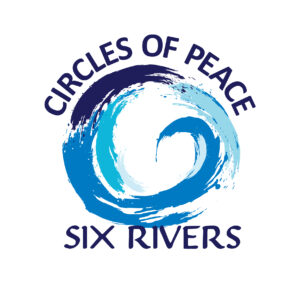
Accountability ∙ Safety ∙ Healing
What is Circles of Peace?
“Circles of Peace” is a free program that helps address crime and harm to prevent it from happening again. It’s different from the regular justice system. Instead of focusing on punishment, it looks at how the harm affected everyone involved and figures out ways to make things better.
Circles of Peace focuses on repairing the damage done, keeping everyone safe, and promoting healing. It’s an alternative to the usual way of handling these things through the justice system.
Who runs Circles of Peace?
The program is run by Six Rivers Dispute Resolution Center, a non-profit organization in the Columbia River Gorge. We are independent and not part of the legal system or law enforcement.
What is the cost to participate in Circles of Peace?
There is no cost; the program is free.
Why participate in Circles of Peace?
- Survivors of harm get to have a say in what happens next, including how much they want to be involved.
- People who caused harm get the chance to take responsibility for what they did and try to make things better.
- Studies show that this approach reduces the chances of harm happening again.
- Survivors usually feel satisfied with the process and the outcome.
- Taking part in these processes can help survivors feel safer and lessen the effects of trauma.
How does Circles of Peace work?
- Cases are referred to Circles of Peace by the Criminal Justice System.
- The Circles of Peace team meets with those involved to explain how the program works.
- Together, they decide if the case is suitable for the program. If it is, the case is handled by Circles of Peace instead of the regular justice system.
What happens during Circles of Peace?
For survivors: You can choose how much you want to participate. You might join talking circles where you discuss what happened and how it affected you. You might also have the option to communicate with the person who harmed you, if you want. If you choose, a stand-in or victim advocate could participate in talking circles instead of you.
For the person who caused harm: You’ll have to join talking circles where you talk about the impact of your actions. You’ll also agree to make things better as outlined in repair agreements. You might get to communicate with the survivor if they agree to it.
Is Circles of Peace safe for survivors?
Yes, ensuring survivor safety is a top priority. A certified victim advocate will be available when needed, and the Circles of Peace team will always monitor safety.
How long does Circles of Peace take?
It varies depending on the case. Some cases might be resolved quickly, while others could take months. Cases are closed when everyone involved and the facilitators agree it’s time.
Where does Circles of Peace come from?
Circles of Peace is inspired by practices used by many cultures, especially Native American communities, for thousands of years. It’s an ancient approach that has been proven effective over time, and the Circles of Peace team respects and acknowledges this history.
For more information, contact Six Rivers at ; 541 386 1283.
Community Assessment Results
What does accountability look like to you?
With guidance from NYU’s Center on Violence and Recovery, we conducted a community readiness assessment in the spring and summer of 2023. We interviewed leaders in our communities who serve in law enforcement, victim advocacy, the criminal justice system, and agencies who provide essential services. We also received direct input from community members through an ongoing survey.
We learned a tremendous amount about the strengths of our community and about areas that need additional options and resources. We were encouraged to find that community values around accountability, survivor needs, safety, and behavior change are in alignment with core restorative justice values.
To see the results of our community assessment, please click the link below.
Throughout our Circles of Peace pilot year, we will continue to collect community survey responses. We seek to hear from a wide range of community members. If you would like to participate in the community survey, please click the links below.
![]() English: Public Survey
English: Public Survey
![]() Español: Encuesta pública
Español: Encuesta pública
Circles of Peace Pilot Year
Through 2024, Six Rivers will run a pilot Circles of Peace restorative justice program, using peacemaking circles to address harm. The Circles of Peace model was developed by NYU’s Center on Violence and Recovery and has been rigorously studied for 20 years. Studies from the National Science Foundation and the National Institute of Justice have shown it to be a safe and effective model, with significantly lower recidivism rates and high levels of survivor satisfaction.
Six Rivers’ Circles of Peace program has been adapted for our rural communities. Our program carefully screens for safety and suitability and monitors cases closely throughout the process. A certified victim advocate is available to be present at circle meetings when needed. Accountability and repair agreements are also closely monitored for follow-through.
Additionally, in the fall of 2023, Six Rivers launched a survivor support circle program to create opportunities for healing and connection for survivors of harm.
To learn more about what research says about restorative justice and Circles of Peace, please visit this link.
Committed Parters
Six Rivers is grateful for the many partners who have made valuable contributions during our 18-month planning and design phase. We give thanks to the following entities:
- The Oregon Criminal Justice Commission and Department of Justice, which have supported our program with grants;
- Our design team, which is made up of victim advocates, prosecutors, public defenders, and community service providers;
- New York University’s Center on Violence and Recovery, which has provided expert technical and training advising;
- Community leaders who have generously shared their expertise;
- Community members who provided input in our community survey;
- Six Rivers board, volunteers, and supporters!
